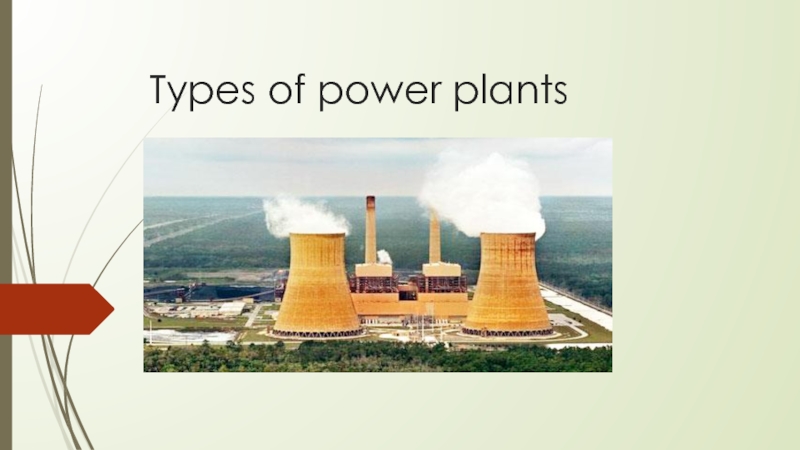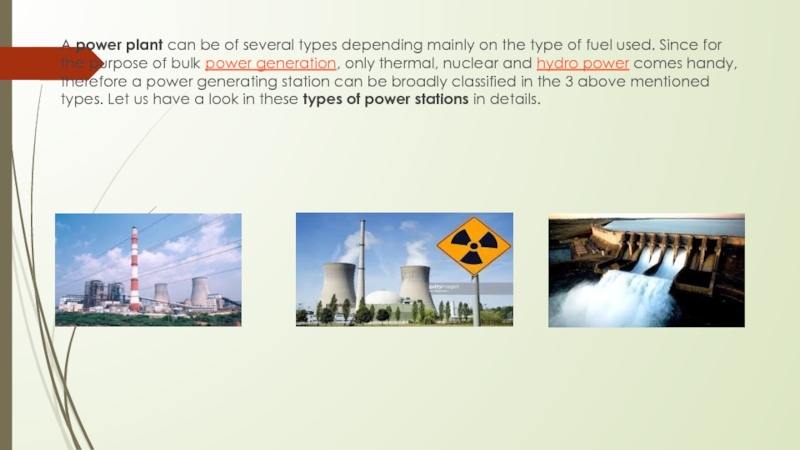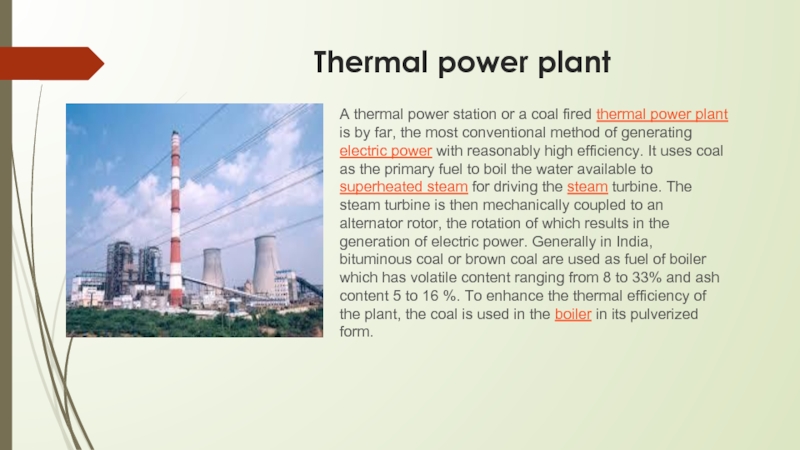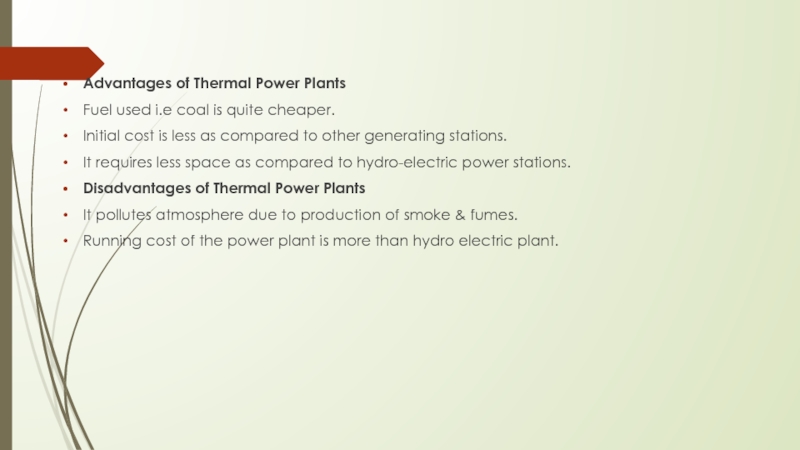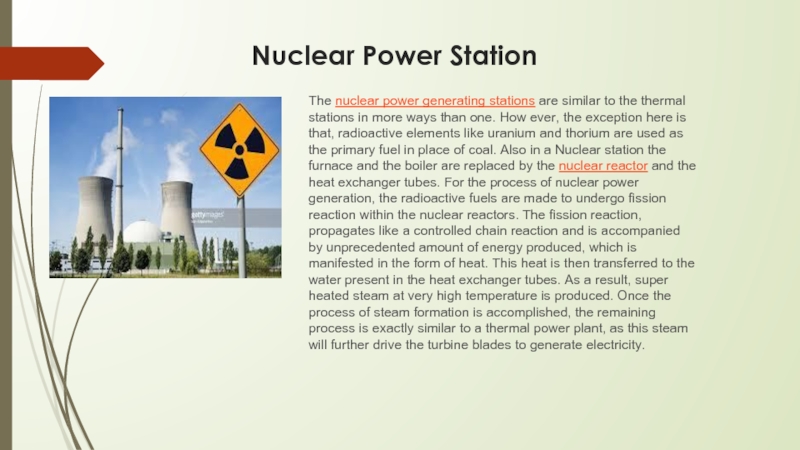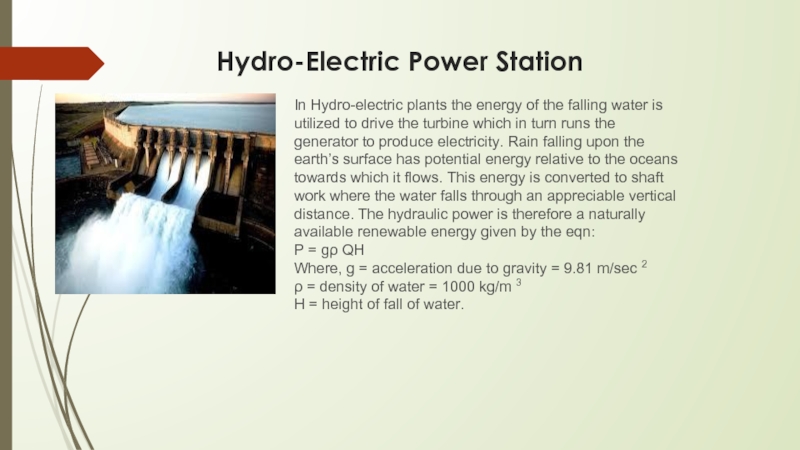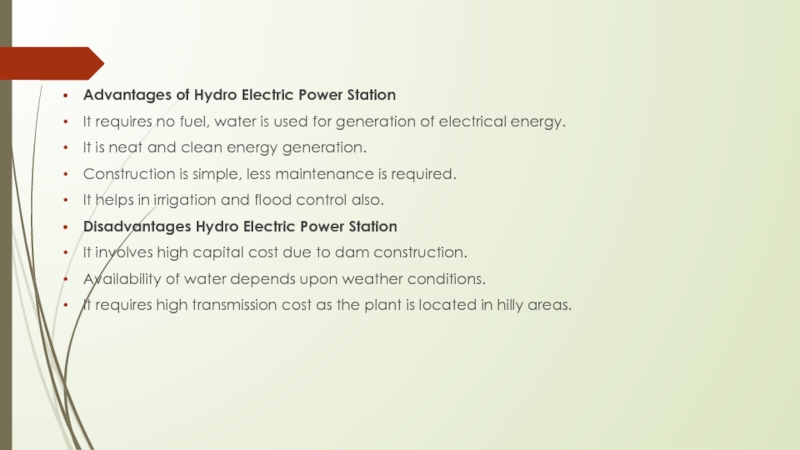- Главная
- Разное
- Дизайн
- Бизнес и предпринимательство
- Аналитика
- Образование
- Развлечения
- Красота и здоровье
- Финансы
- Государство
- Путешествия
- Спорт
- Недвижимость
- Армия
- Графика
- Культурология
- Еда и кулинария
- Лингвистика
- Английский язык
- Астрономия
- Алгебра
- Биология
- География
- Детские презентации
- Информатика
- История
- Литература
- Маркетинг
- Математика
- Медицина
- Менеджмент
- Музыка
- МХК
- Немецкий язык
- ОБЖ
- Обществознание
- Окружающий мир
- Педагогика
- Русский язык
- Технология
- Физика
- Философия
- Химия
- Шаблоны, картинки для презентаций
- Экология
- Экономика
- Юриспруденция
Types of power plants презентация
Содержание
- 1. Types of power plants
- 2. A power plant can be of several
- 3. Thermal power plant A thermal power station
- 4. Advantages of Thermal Power Plants Fuel used
- 5. Nuclear Power Station The nuclear power
- 6. Hydro-Electric Power Station In Hydro-electric plants
- 7. Advantages of Hydro Electric Power Station It
- 8. Apart from these major types of power
Слайд 2A power plant can be of several types depending mainly on
the type of fuel used. Since for the purpose of bulk power generation, only thermal, nuclear and hydro power comes handy, therefore a power generating station can be broadly classified in the 3 above mentioned types. Let us have a look in these types of power stations in details.
Слайд 3Thermal power plant
A thermal power station or a coal fired thermal
power plant is by far, the most conventional method of generating electric power with reasonably high efficiency. It uses coal as the primary fuel to boil the water available to superheated steam for driving the steam turbine. The steam turbine is then mechanically coupled to an alternator rotor, the rotation of which results in the generation of electric power. Generally in India, bituminous coal or brown coal are used as fuel of boiler which has volatile content ranging from 8 to 33% and ash content 5 to 16 %. To enhance the thermal efficiency of the plant, the coal is used in the boiler in its pulverized form.
Слайд 4Advantages of Thermal Power Plants
Fuel used i.e coal is quite cheaper.
Initial
cost is less as compared to other generating stations.
It requires less space as compared to hydro-electric power stations.
Disadvantages of Thermal Power Plants
It pollutes atmosphere due to production of smoke & fumes.
Running cost of the power plant is more than hydro electric plant.
It requires less space as compared to hydro-electric power stations.
Disadvantages of Thermal Power Plants
It pollutes atmosphere due to production of smoke & fumes.
Running cost of the power plant is more than hydro electric plant.
Слайд 5Nuclear Power Station
The nuclear power generating stations are similar to the
thermal stations in more ways than one. How ever, the exception here is that, radioactive elements like uranium and thorium are used as the primary fuel in place of coal. Also in a Nuclear station the furnace and the boiler are replaced by the nuclear reactor and the heat exchanger tubes. For the process of nuclear power generation, the radioactive fuels are made to undergo fission reaction within the nuclear reactors. The fission reaction, propagates like a controlled chain reaction and is accompanied by unprecedented amount of energy produced, which is manifested in the form of heat. This heat is then transferred to the water present in the heat exchanger tubes. As a result, super heated steam at very high temperature is produced. Once the process of steam formation is accomplished, the remaining process is exactly similar to a thermal power plant, as this steam will further drive the turbine blades to generate electricity.
Слайд 6Hydro-Electric Power Station
In Hydro-electric plants the energy of the falling water
is utilized to drive the turbine which in turn runs the generator to produce electricity. Rain falling upon the earth’s surface has potential energy relative to the oceans towards which it flows. This energy is converted to shaft work where the water falls through an appreciable vertical distance. The hydraulic power is therefore a naturally available renewable energy given by the eqn:
P = gρ QH
Where, g = acceleration due to gravity = 9.81 m/sec 2
ρ = density of water = 1000 kg/m 3
H = height of fall of water.
Слайд 7Advantages of Hydro Electric Power Station
It requires no fuel, water is
used for generation of electrical energy.
It is neat and clean energy generation.
Construction is simple, less maintenance is required.
It helps in irrigation and flood control also.
Disadvantages Hydro Electric Power Station
It involves high capital cost due to dam construction.
Availability of water depends upon weather conditions.
It requires high transmission cost as the plant is located in hilly areas.
It is neat and clean energy generation.
Construction is simple, less maintenance is required.
It helps in irrigation and flood control also.
Disadvantages Hydro Electric Power Station
It involves high capital cost due to dam construction.
Availability of water depends upon weather conditions.
It requires high transmission cost as the plant is located in hilly areas.
Слайд 8Apart from these major types of power generations, we can resort
to small scale generation techniques as well, to serve the discrete demands. These are often referred to as the alternative methods or non conventional energy of power generation and can be classified as
Solar power generation. (making use of the available solar energy)
Geo-thermal power generation. (Energy available in the Earth’s crust)
Tidal power generation.
Wind power generation (energy available from the wind turbines)
Solar power generation. (making use of the available solar energy)
Geo-thermal power generation. (Energy available in the Earth’s crust)
Tidal power generation.
Wind power generation (energy available from the wind turbines)
